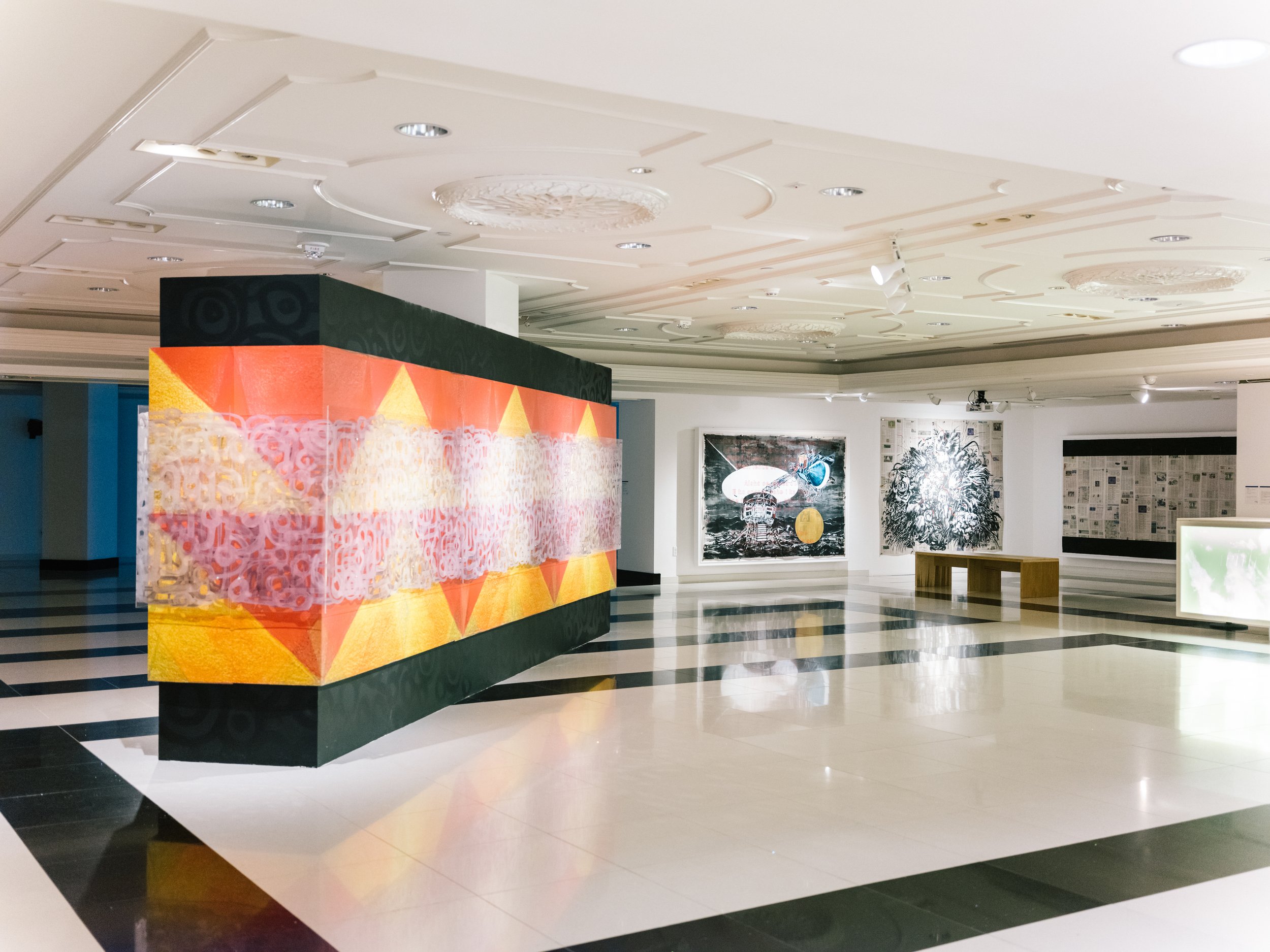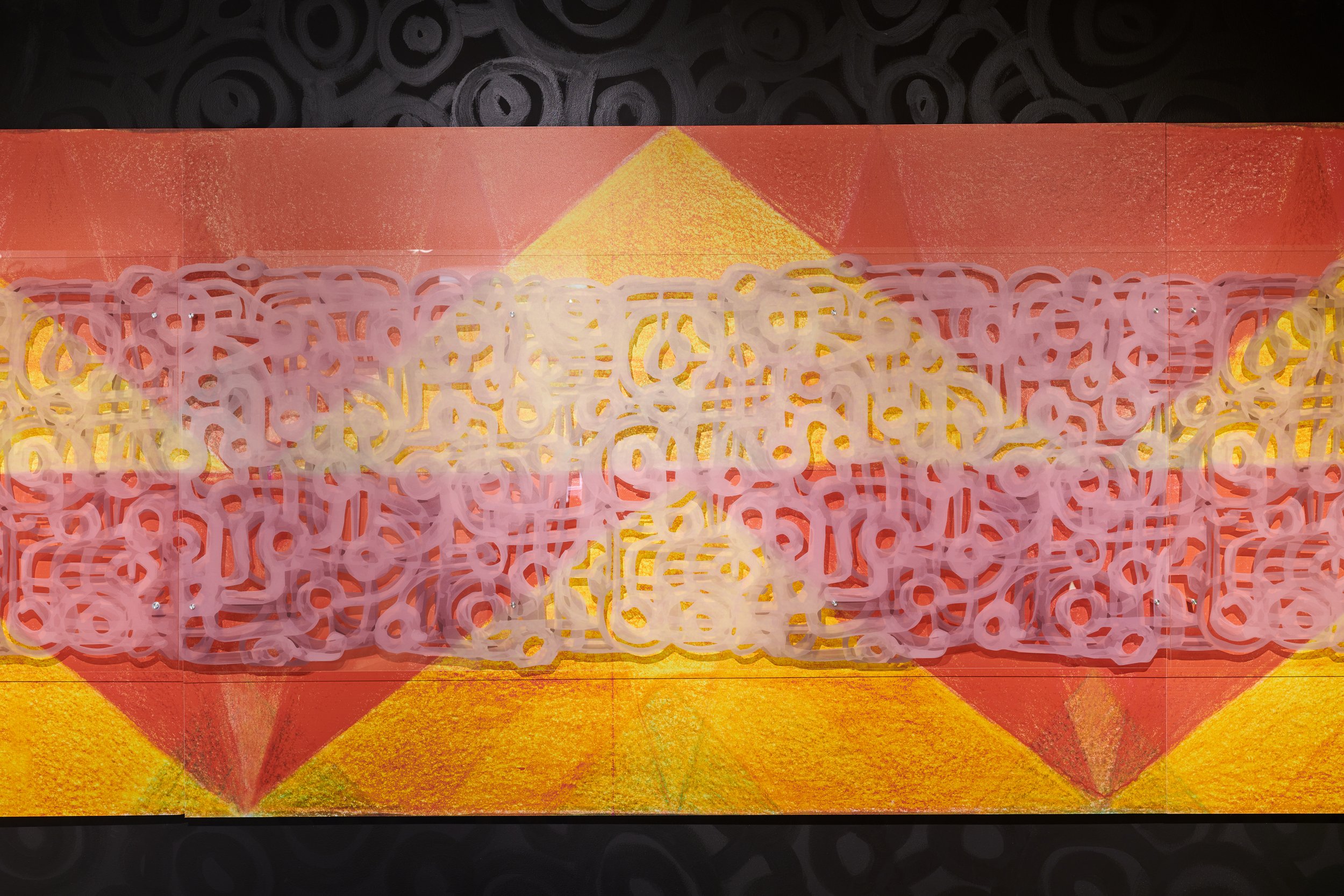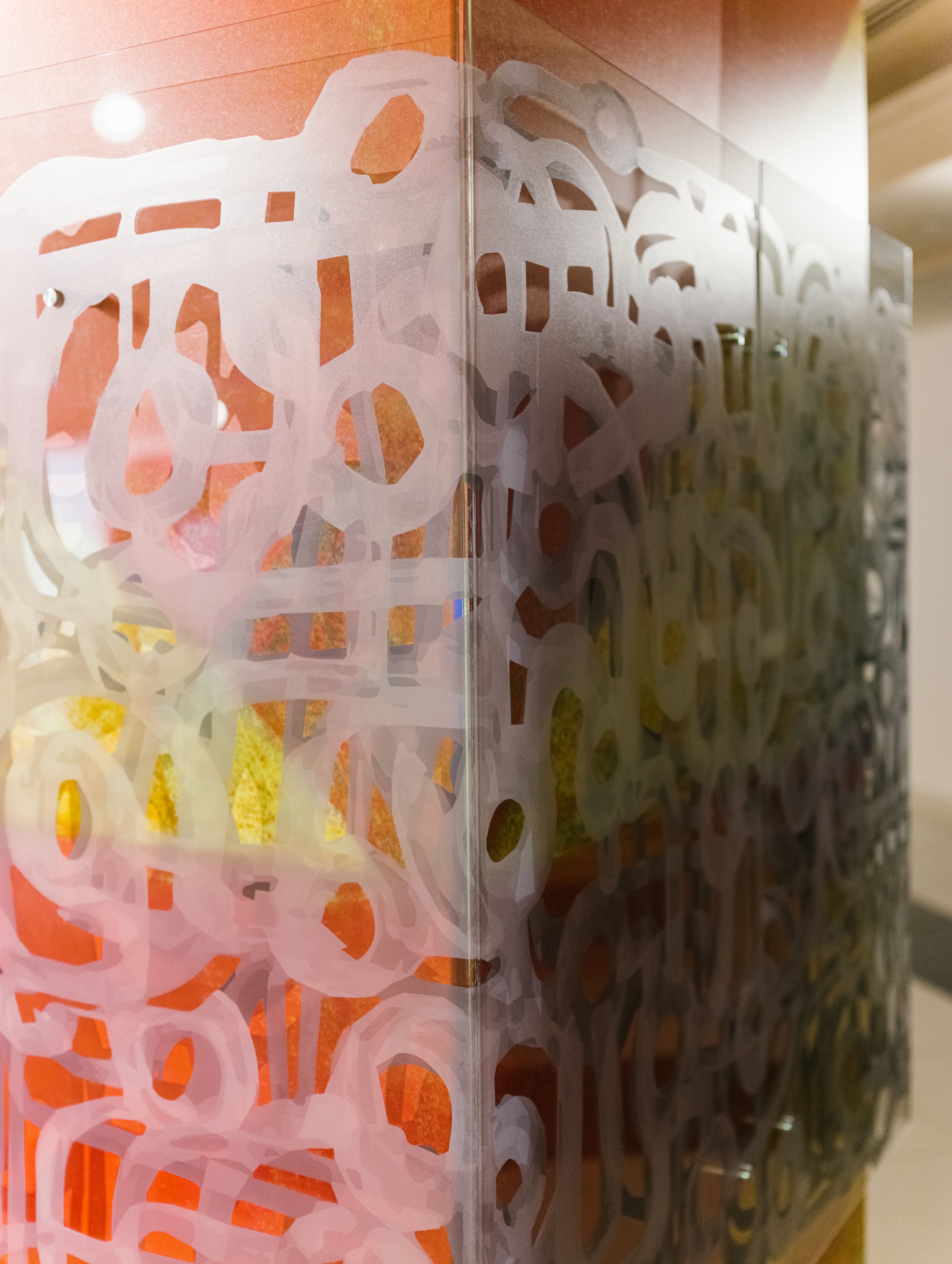hawai‘i triennial 2022
@ ROYAL HAWAIIAN CENTER
Herman Pi‘ikea Clark
b. 1960, Honolulu, Kona, Oʻahu
lives and works in Honolulu and Toronto
Installation views: Herman Piʻikea Clark, Poʻo ʻOle , 2021, Royal Hawaiian Center, HT22, Waikīkī. Courtesy of the artist and Hawai‘i Contemporary. Photos: Christopher Rohrer.
Herman Piʻikea Clark is an artist, designer, and educator making drawings, paintings, textiles, sculptures, garments, and curriculum. As a keiki o ka ʻāina, he has long been inspired by his heritage and its connections with peoples and cultures across the Pacific. Since the late 1990s, Clark has played an active role in the development of an international network of Indigenous artist educators from Aotearoa to Canada. Confrontational at times and easygoing in others, his multifaceted practice—no matter its form—is always guided by his family’s deep ancestral roots across Hawaiʻi.
Clark grew up visiting his great grandmother at Lae o ka Oʻio, Kaʻaʻawa, on the windward side of Oʻahu. There he learned how to fish and read the ocean environment that sustained their family for generations. Recounting a story from childhood in an essay about sustaining Hawaiian culture within a globalized art market, Piʻikea writes, ‘Standing on the edge of a deep blue opening in the reef, the waves swirling around her feet, my great grandmother translated the words of an old proverb about mūheʻe [squid]. “Ka mūheʻe, he iʻa hololua, Mūheʻe are clever”, she said, “... When they swim, they move with the flow of the currents yet they are able to quickly change direction in order to avoid the fisherman’s net.” ’ A strategy for survival, offered through metaphor, Clark kept his great grandmother’s lesson close as he maneuvered through challenging institutional passages across Moananui in support of art, design, and education.
In 1996, Clark received his Master of Fine Arts in Design from the University of Hawaiʻi at Mānoa, (UH Mānoa). Following his thesis exhibition, he submitted a course proposal to the curriculum committee and in 1998 spearheaded the first art class dedicated to Hawaiian perspectives taught within the Department of Art and Art History at UH Mānoa. Commenting on the underlying racism of the department and university in an essay about Hawaiians challenging colonial notions of art, written by author and editor Māhealani Dudoit (also a student enrolled in his course), Clark asks, ʻWhat about our own? What about our own aesthetic? What about our own condition? What about our own culture which is 2,000 years old?’
Frustrated by the lack of Hawaiian representation in local arts and educational institutions, Clark subsequently left Oʻahu to connect with the greater Pacific, eventually resettling in Aotearoa where he received his Doctorate of Indigenous Education and Art from Massey University in 2006. In parallel, he and his wife, Native Norfolk Island artist Sue Pearson, developed the design studio Pili Pacific. In 2018, after more than two decades abroad, Clark returned to Oʻahu to open an aloha-wear retail store and continues to advocate for a future of art, design, and education that is imbued with Indigenous self-determination and sovereignty.
For HT22 Clark turns again towards his family, this time focusing on his grandfather and the concept of Poʻo ʻOle. Translated literally, this Hawaiian name and phrase means ‘headless’. However, its metaphoric meaning describes a quality or condition of being that is endless. It is this notion that provides the conceptual basis for Clark’s installation composed of repeating ancestral shape and color elements attributed to chiefly regalia—cloaks, capes, and helmets of vibrant red and yellow feathers. In the context of Waikīkī, where tourism runs rampant, consuming land and resources without care, Po‘o ‘Ole advances the continuity and evolution of Hawaiian culture, knowledge, and genealogies as the foundation for the vitality and sustaining prosperity of Hawaiʻi.
Herman Piʻikea Clark. Courtesy of the artist.
Herman Pi’ikea Clark was born and raised in Honolulu, Herman Pi’ikea Clark is a Keiki o ka ‘Aina from a family with deep ancestral roots across Hawaii. A graduate of Punahou School, Herman completed a Master of Fine Arts in Pacific Design from the University of Hawaii and a Doctorate of Indigenous Education and Art from Massey University in New Zealand. Over the last twenty-five years, he has gained international recognition as an artist, designer, and professor of indigenous art and education. Clark combines broad experience as a university professor, a business partner, innovation institute director, designer/artist and indigenous educator to inspire the development of new ideas, concepts, products and approaches that grow the capacity, potential and performance of leaders and executive teams.
His artworks and design commissions can be found in both private and public collections in Hawaii, the US mainland, and the Pacific region.is an international authority in the fields of culture, creativity, design thinking, innovation, cross-cultural communication and indigenous knowledge. In 2003, he and his wife established ‘Pili,’ a Design studio focusing on Pacific identity. His commissioned projects include works for architectural, graphic, textile and interior design.






